- Home
- John Irving
My Movie Business: A Memoir Page 8
My Movie Business: A Memoir Read online
Page 8
Daruwalla invents a young American doctor and makes
him the idealistic fool who’s obsessed with getting the
6190_Irving_14_js.qxd 8/23/99 5:43 PM Page 90
9 0
J O H N I R V I N G
dwarfs’ blood. (In the screenplay, Dr. Daruwalla is a minor character, but a dignified one; dwarf research would be be-neath him.)
That winter I was in Junagadh, the leader of the dwarf clowns was named Shivaji. I had already studied achondroplasia; I knew that an achondroplastic dwarf could be born of normal parents, and that the dwarf’s children would have a 50 percent chance of being dwarfs. This type of dwarfism is most often the result of a rare genetic event, a spontaneous mutation, which then becomes a dominant characteristic in the dwarf’s children.
Shivaji’s parents had been normal. Shivaji’s only child was a dwarf. Shivaji’s wife was normal, and—to use his own description of her—“almost beautiful.” But she’d come from a very poor family; she had no dowry. “Only a dwarf would marry her,” Shivaji explained.
Sitting in his tent, I was unsuccessful in convincing Shivaji that his existence was probably the result of “a rare genetic event, a spontaneous mutation”; he didn’t believe in genes, he told me.
Shivaji was no less suspicious of my fictional doctor.
“What does this guy want with our blood?” he asked.
I explained that my doctor was looking for the secret thing that made him a dwarf.
“It’s no secret,” Shivaji told me. He thought he knew all about it. He said he was a dwarf because, on the morning
6190_Irving_14_js.qxd 8/23/99 5:43 PM Page 91
M Y
M O V I E
B U S I N E S S
9 1
his mother conceived, she looked out the window and the first living thing she saw was a dwarf. “That did it,” Shivaji explained.
What about his son, who was also a dwarf ? That was because, on the morning his wife conceived, she rolled over and looked at Shivaji. “I told her not to look at me, but she did,” he said. “Your doctor is wasting his time,” Shivaji added.
I tried again. “My doctor is looking for something in the dwarfs’ blood, which—if he finds it—will help other people not to give birth to dwarfs.”
“Why should I help your doctor put an end to dwarfs?”
Shivaji asked. An unanswerable question.
In the novel, I gave Shivaji’s firmly held opinions to the character Vinod. In the screenplay, I let Shivaji be Shivaji—
I hoped that he might get a chance to play himself. That wasn’t to be. (I presume that my Shivaji is still a clown in the Great Royal Circus, but we will use a different circus in the film.)
Although it took me five and a half years to write the novel of A Son of the Circus, once I finished, the book was published on schedule in 1994. The screenplay was first scheduled to go into production in the fall of 1997, but that fell through. The film was then scheduled for production in the winter of 1999. Jeff Bridges was cast as the missionary both times. And, both times, the film came up
6190_Irving_14_js.qxd 8/23/99 5:43 PM Page 92
9 2
J O H N I R V I N G
short by exactly the same amount of money: $1.5 million.
Thus the second production fell through as well.
This is a notable difference between a novel and a film.
A novel that has been accepted for publication, and has been edited for publication—and is in all other respects ready for publication—does not “fall through.” That is one of the principal reasons I prefer my day job as a novelist to my occasional job as a screenwriter. I can count on the fingers of one hand the number of truly good novels I have read in manuscript that have not been published, but good screenplays don’t get made into movies all the time.
(More’s the pity—so many bad ones do. )
As of this writing, Martin Bell isn’t leaving for India anytime soon. It’s been nine years since we were in Junagadh together. Martin’s face is completely healed. But not really.
In the novel of A Son of the Circus, I made comic use of that chimp attack—a “racist chimpanzee,” upon spotting the unfamiliarly fair-skinned missionary among a sea of all-brown faces, bites off the missionary’s earlobe. After the biting, the missing earlobe cannot be found.
Of course I know that the real chimp attack was not
comic to Martin Bell; nor will his face be “completely healed” until we make the movie. In the movie business, it’s absolutely essential to keep believing that we will.
6190_Irving_15_js.qxd 8/23/99 5:44 PM Page 93
1 5
N O T W A N G ,
N O T W I N T E R B O T T O M
met Richard Gladstein, the producer from FilmColony, in Vermont in May 1995. I liked him instantly; he was Iresolutely practical.In order to make TheCiderHouse Rules “happen” as a movie, Richard proceeded as straight-forwardly as a clock. He presented the novel and a 1992
draft of the screenplay to Miramax. Miramax optioned the old draft of the script and the novel; they agreed to finance the film, provided that Richard find an acceptable director.
This meant finding someone who was acceptable to
Richard, Miramax, and me. The cast had to be “acceptable” to each of us, too. That was the deal.
First of all, how hard could finding an acceptable director be? As it turned out, very.
I was part of the problem. I’m not a moviegoer, having
6190_Irving_15_js.qxd 8/23/99 5:44 PM Page 94
9 4
J O H N I R V I N G
seen only two movies in a movie theater in the last ten years, Schindler’s List and The English Patient. I saw those particular films because I grew tired of friends telling me that they were better than the books they came from. They weren’t, though I thought that they were very good films.
All of the movies that Richard Gladstein wanted me to see, while we were searching for a director for The Cider House Rules, I saw on video. If the VCR didn’t exist, I probably wouldn’t see any movies. I don’t like sitting in large, dark rooms with a lot of strangers. I do like fastforwarding through the boring parts, and being able to rewind the tape and watch again the scenes I really like. The VCR has made watching movies more like reading books.
I used to like going to the movies. At Exeter, I saw my first Ingmar Bergman film in the Thompson gymnasium
on a Saturday night. The sound track was incomprehensible, the subtitles frequently out of focus.We sat on folding metal chairs on a basketball court, and the film was in black-and-white. But it was Bergman. Everything in my life as a moviegoer has been downhill from there.
This was what Richard Gladstein had to deal with when he asked me to “mutually approve” a director for The Cider House Rules: someone who had virtually stopped going to movies when Ingmar Bergman announced he had made his last film (the incomparable Fanny and Alexander).
The list of directors acceptable to Miramax was fairly
6190_Irving_15_js.qxd 8/23/99 5:44 PM Page 95
M Y
M O V I E
B U S I N E S S
9 5
long, and I hadn’t seen most of the movies by most of these directors. Richard’s process was this: he met with various candidates, and if they responded to the material in a manner he liked (and in a manner he thought I would like), then he asked me to view their work. Only if I approved of someone would we move forward. It was a process that was very fair to me, but I watched a lot of movies and there were very few I liked. The list of directors acceptable to Miramax and me wound up being pretty short.
One of the directors whose work I liked was Wayne
Wang. He’d directed The Joy Luck Club and Smoke. But as different as these films are from each other, in both cases the narrative is naturalistic, almost unstructured; stories overlap or run parallel to one another, but the stories are not necessarily connected to a plot. The Ci
der House Rules is a highly structured narrative, not at all naturalistic. A plot-driven story follows a predestined path. Dr. Larch’s life is a plan; Homer Wells’s life is designed to fit into Larch’s plan.
Before Wayne Wang became involved with the project,
I’d made my way through Richard’s extensive notes on the script that Phillip Borsos and I had agreed to shoot. I’d already substantially revised the screenplay when Wayne gave me his suggestions, some of which were at odds with Richard’s earlier notes. After my first attempt to incorporate Wayne’s suggestions into the script, and in subsequent
6190_Irving_15_js.qxd 8/23/99 5:44 PM Page 96
9 6
J O H N I R V I N G
conversations with both Wayne and Richard, I found myself more inclined to follow Richard’s advice than Wayne’s.
I don’t know if this generalization is fair, but Richard and I acted on it: if the screenwriter is taking more direc-tion from the producer than from the director, probably there should be another director.Wayne Wang and I parted company very amicably.
The screenplay, although it now bore Richard’s considerable influence—there had been much reordering of the sequence of events—remained in one respect as Phillip and I had conceived it. There was no Homer-Candy-Wally triangle. Richard and I had given Homer a lengthy sexual escapade (with Debra Pettigrew, one of the apple-mart women), but Homer was nonetheless a boy without a love story when he returned to the orphanage at St. Cloud’s. It was still, to a degree, what Phillip and I had called “the bleak version.”
And there was still no director for the movie. I remember telling Richard that I wished he could direct the picture; I truly wanted him to. But Richard was a good producer; he knew which hat to wear. Hence Michael Winterbottom became the third director for The Cider House Rules.
Winterbottom had impressed both Richard and me
with his treatment of the Thomas Hardy novel Jude the Ob-scure—not the easiest of Hardy’s novels to turn into a film.
With the exception of Polanski’s Tess, most of Hardy’s nov-
6190_Irving_15_js.qxd 8/23/99 5:44 PM Page 97
M Y
M O V I E
B U S I N E S S
9 7
els that have been made into movies have proved themselves to be unyielding to the form. To Thomas Hardy, the degree of predestination in The Cider House Rules would have seemed mild.
Hardy insisted that a novel had to be a better story than something you might happen upon in a newspaper. He
meant “better” in every way: bigger, more complex, more interconnected, and also having a kind of symmetry—at the very least, closure. His novels achieve a universal un-fairness that seems inevitable. They are not just plot-driven; they are guided by the characters’ fate.
Winterbottom’s Jude captured that, and Winterbottom also made Jude’s intellectual suffering emotional. As for what Winterbottom could draw out of his actors, one
needs only to look at Kate Winslet’s striking performance—in particular, her giving birth and her reaction to her slain children. Moreover, Winterbottom was able to capture the atmosphere of Hardy’s fictional Wessex; the film looked authentic.
A director’s ability to handle both the historical period and the atmospheric detail was essential to The Cider House Rules, wherein the claustrophobia of the orphanage at St.
Cloud’s, and the cider house, where the migrant pickers live, must be seen in juxtaposition to the beauty of the Maine coast and the palpable comforts of the homes where Wally and Candy come from. That Winterbottom could
6190_Irving_15_js.qxd 8/23/99 5:44 PM Page 98
9 8
J O H N I R V I N G
grasp the destiny which Larch creates for Homer was
something I accepted from the moment I saw Jude; Winterbottom had already grasped Thomas Hardy.
I met Michael Winterbottom in Amsterdam, where I
was doing research in the red-light district for A Widow for One Year. I was spending my days with Margot Alvarez, a former prostitute who was then the director of a prostitutes’ rights organization, and my nights with a policeman, Joep de Groot, on his beat in the district. I was exhausted.
Winterbottom wasn’t in much better shape than I was.
It had been difficult for us to meet because he was editing his Sarajevo film, and he could spend only one night in Amsterdam because he had to be back in England for one of his children’s birthdays in the morning. To make matters worse, the one night when Winterbottom could be in Amsterdam, I wasn’t available for dinner; I had previously arranged with Joep to take some notes on the inner work-ings of a Thai massage parlor.
It was already ten o’clock at night when I met Winterbottom, with Richard Gladstein, in the bar of the Grand.
Winterbottom was drinking what looked like orange juice, but—as Janet informed me later—I was half-plastered. I’d had only a modest amount of wine with dinner; yet later, in the Thai massage parlor, Joep had persuaded me to drink a couple of beers.
Doubtless Michael Winterbottom would agree: our
first meeting was less than promising.Winterbottom took
6190_Irving_15_js.qxd 8/23/99 5:44 PM Page 99
M Y
M O V I E
B U S I N E S S
9 9
a back-to-the-book approach to the existing screenplay.
While it is hard for a novelist to argue that any reader could love a novel too much, Winterbottom’s principal passion for The Cider House Rules was directed toward a part of the book I had left out of the film. The Homer-Candy-Wally triangle meant everything to him; he simply couldn’t make the movie without that triangle, he said.
Without it, Winterbottom argued, Homer’s departure
from St. Cloud’s and his return to his predestined duties at the orphanage hospital would mean less. I argued that, given the time constraints inherent in a film, the love story would detract from the more important relationships—
Dr. Larch’s estranged but loving relationship with Homer and Homer’s subsequent decision to perform abortions because of his discovery of the relationship between Rose Rose and her father. But for Phillip Borsos and me to have replaced Homer’s love affair with Candy with Homer’s one-sided infatuation with Rose Rose was unsatisfying—at least from Winterbottom’s point of view, and I now think he was right.
Phillip and my “bleak version” may indeed have been
unsatisfying as a love story; yet in our script it was clear that Dr. Larch’s teaching and Mr. Rose’s entanglement with his daughter were the main influences in Homer’s life. In the film, I knew that I didn’t want Candy to rival Larch’s or Mr. Rose’s importance to Homer.
If I had been less tired, or more sober, I might have
6190_Irving_15_js.qxd 8/23/99 5:44 PM Page 100
1 0 0
J O H N I R V I N G
made a more truthful response to Winterbottom’s vision of The Cider House Rules; I could have saved Michael and me a lot of time if I’d just said no. Lack of sleep and too much alcohol affect people differently. Some people I know become increasingly argumentative. Not me—I become entirely too agreeable for my own good. Instead of sticking to “the bleak version” and never admitting Homer and Candy’s love affair into the screenplay, I told Winterbottom that I was skeptical but that I would try it. And once that love story gained entrance into the script, there would be no getting rid of it. It would even outlast Michael Winterbottom’s attachment to the project, and Michael’s attachment to The Cider House Rules was long and rigor-ous; we both worked very hard to make his version work.
It’s interesting that Richard remembers my first meeting with Winterbottom in Amsterdam a little differently. He says: “You guys were in complete disagreement. Everyone thought,‘That’s that, move on.’ But over the next few days, after Winterbottom went back to England, we stayed in Amsterdam; we went to a church, we looked at the prostitutes in their windows, and the
n you and Janet and I went to a pub. It was there that you had a couple of beers (Janet and I had a couple of drinks, too), and—after a bit of prod-ding from Janet and me—you agreed to give Homer a life in the middle of the story. In fact, that first meeting with Winterbottom ended so discouragingly that when I phoned
6190_Irving_15_js.qxd 8/23/99 5:44 PM Page 101
M Y
M O V I E
B U S I N E S S
1 0 1
Winterbottom to say that you’d agreed to try to bring Candy into the screenplay, he thought I was making it up.”
Thus, according to Richard, he and my wife convinced me to “give Homer a life.” On this point, Richard’s memory is probably more accurate than mine. (I was distracted that entire time in Amsterdam, because my principal reason for being there had nothing to do with The Cider House Rules.) And Janet’s memory of that time more closely resembles Richard’s version than mine. She remembers
thinking that it would never work with Winterbottom; according to Janet, it was the love story (not Winterbottom) that deserved a chance. She was right.
There were problems from the beginning. Winterbot-
tom wanted to shoot the film in the spring; he simply wasn’t available in the fall. The movie’s main season was the fall—namely, the apple harvest. What would we do with the fact that there would be blossoms on the apple trees instead of apples? (No one ever answered that question.) Even if we’d shot the orchards after the blossoms had fallen off the trees, and the bees were gone from the orchards, even if we’d painted green apples red, the spring in New England does not look like the fall. By the time you’re picking apples, the other trees—the maples, chiefly—are already starting to change color. By the end of the harvest, the peak of the fall foliage has come and gone; most of the leaves are off the trees, many of the
6190_Irving_15_js.qxd 8/23/99 5:44 PM Page 102
1 0 2
J O H N I R V I N G
branches bare. Nothing remains of the spring’s new green.
And where would we get snow in the spring? It might not even be cold enough to make snow.

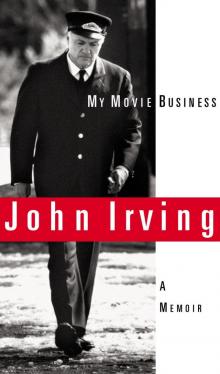 My Movie Business: A Memoir
My Movie Business: A Memoir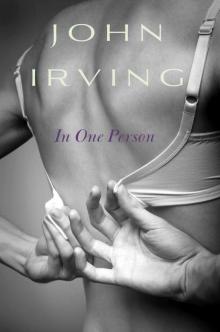 In One Person
In One Person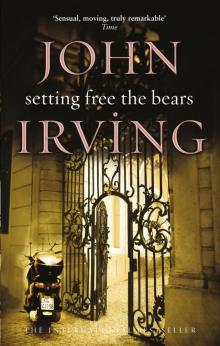 Setting Free the Bears
Setting Free the Bears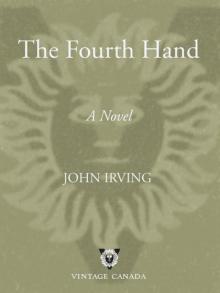 The Fourth Hand
The Fourth Hand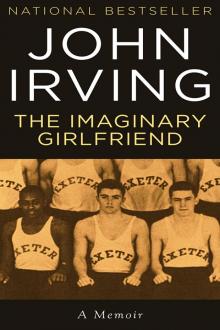 The Imaginary Girlfriend
The Imaginary Girlfriend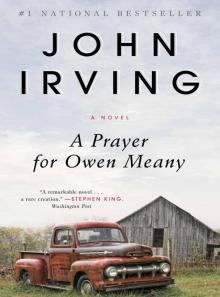 A Prayer for Owen Meany
A Prayer for Owen Meany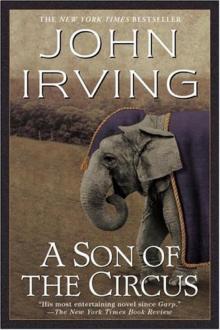 A Son of the Circus
A Son of the Circus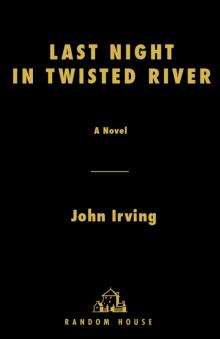 Last Night in Twisted River
Last Night in Twisted River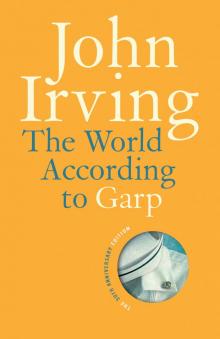 The World According to Garp
The World According to Garp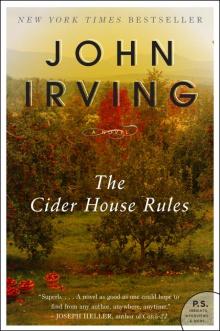 The Cider House Rules
The Cider House Rules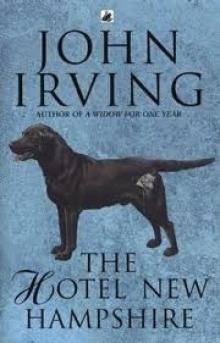 The Hotel New Hampshire
The Hotel New Hampshire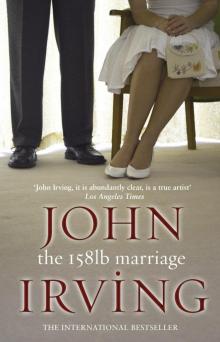 The 158-Pound Marriage
The 158-Pound Marriage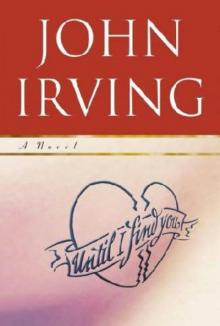 Until I Find You
Until I Find You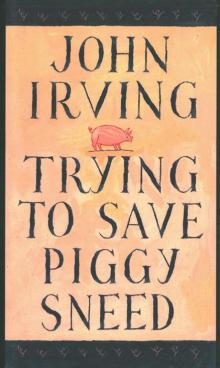 Trying to Save Piggy Sneed
Trying to Save Piggy Sneed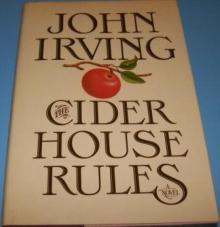 Cider House Rules
Cider House Rules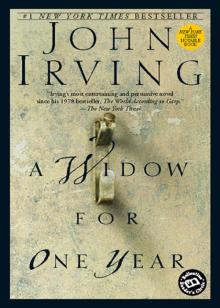 A Widow for One Year
A Widow for One Year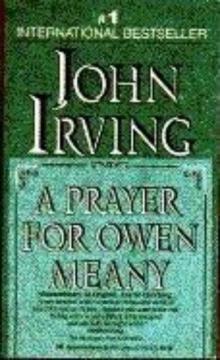 A prayer for Owen Meany: a novel
A prayer for Owen Meany: a novel (2005) Until I Find You
(2005) Until I Find You